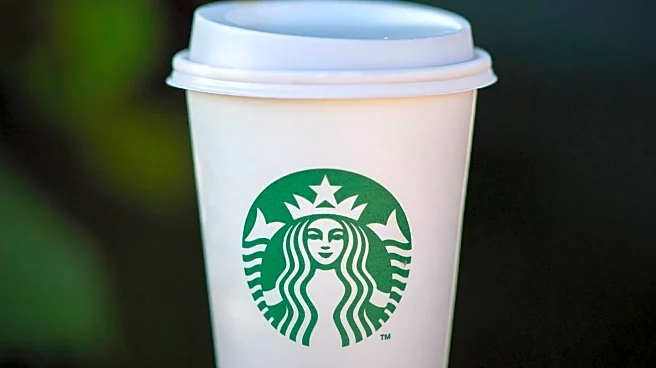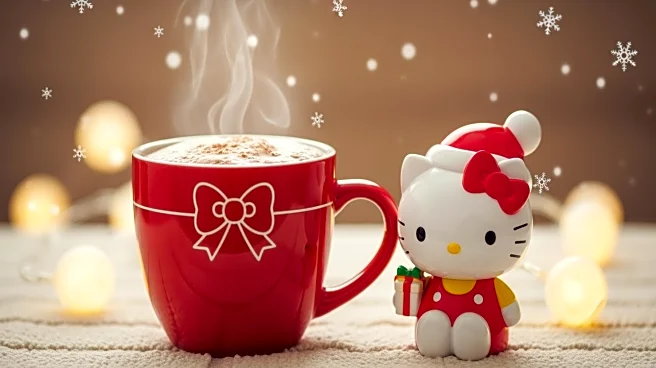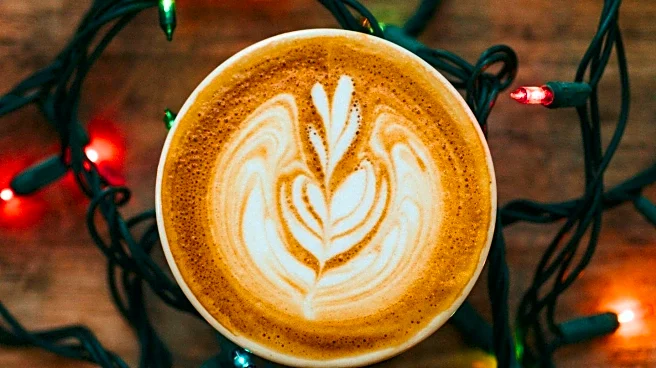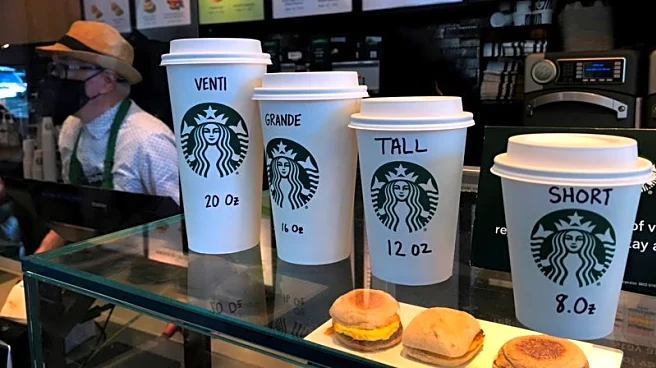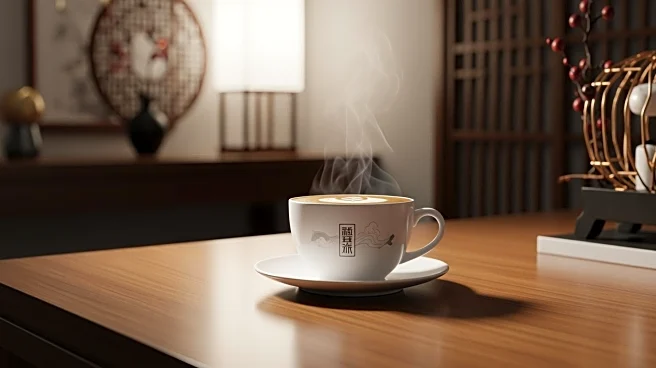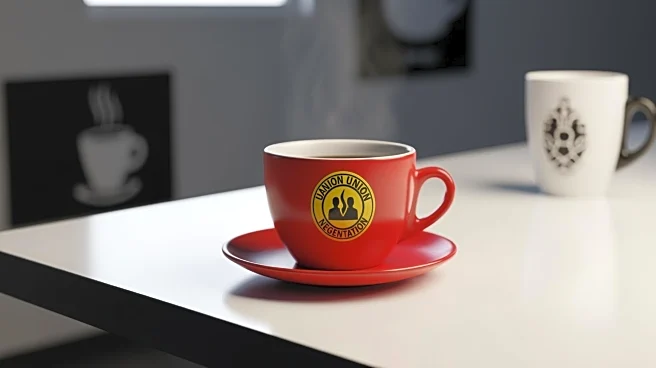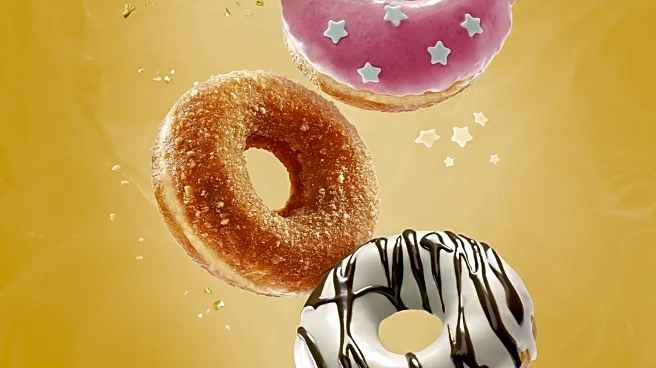What's Happening?
Starbucks has launched its 2025 holiday menu, bringing back popular drinks such as the Peppermint Mocha, Caramel Brulée Latte, and Iced Sugar Cookie Latte. Notably, the Eggnog Latte and Chestnut Praline
Latte, absent since 2021, are making a return. The menu also includes seasonal cold foam flavors like Gingerbread Cream Cold Foam and Peppermint Chocolate Cream Cold Foam, which can be enhanced with protein. Alongside beverages, Starbucks is offering seasonal pastries, including the Snowman Cookie and a new Polar Bear Cake Pop. The holiday cup designs feature ribbons and plaid patterns, and Red Cup Day is set for November 13.
Why It's Important?
The return of classic holiday drinks is significant for Starbucks as it taps into consumer nostalgia, potentially boosting sales during the holiday season. The inclusion of protein in cold foams caters to health-conscious customers, expanding Starbucks' appeal. The holiday menu and merchandise, including seasonal drinkware, are likely to drive foot traffic to stores, enhancing customer engagement and brand loyalty. This strategy aligns with Starbucks' efforts to maintain its competitive edge in the coffee industry by offering unique and anticipated seasonal products.
What's Next?
Starbucks is expected to continue leveraging seasonal offerings to attract customers and increase sales. The success of the holiday menu could influence future product launches and marketing strategies. As the holiday season progresses, Starbucks may introduce additional promotions or limited-time offers to sustain consumer interest. The company will likely monitor customer feedback to refine its menu and merchandise offerings, ensuring alignment with consumer preferences.
Beyond the Headlines
The revival of nostalgic flavors highlights the emotional connection consumers have with seasonal products, emphasizing the role of tradition in brand loyalty. Starbucks' strategy reflects broader industry trends where companies capitalize on nostalgia to enhance customer experience and drive sales. This approach may influence other brands to revisit past successful products, fostering a cycle of nostalgia-driven marketing.
